
Limoges: The Heart of French Porcelain and Heritage
Discover Limoges, the enchanting French city known for its exquisite porcelain, medieval architecture, vibrant markets, and rich cultural festivals in the heart of Nouvelle-Aquitaine.
Limoges, nestled in the Nouvelle-Aquitaine region of France, is a city famed for its rich artistic heritage, particularly its world-renowned porcelain. This ancient city charms visitors with its mix of medieval architecture, vibrant culture, and lush landscapes. As you wander through its streets, you'll encounter beautifully preserved buildings, quaint alleyways, and an array of museums that tell the story of its storied past. Begin your journey at the magnificent Limoges Cathedral, a stunning example of Gothic architecture. Nearby, the Bishop's Palace Museum offers a fascinating glimpse into the city's history, housing exquisite collections of enamels and ceramics. A visit to the Adrien Dubouché National Museum is essential for any art lover, showcasing an impressive array of Limoges porcelain pieces. The city's vibrant markets are a feast for the senses. The Central Market Hall, with its Art Deco charm, bustles with local vendors offering fresh produce, cheeses, and regional delicacies. Don't miss the chance to sample some local specialties, such as the famous Limousin beef and clafoutis, a delightful cherry dessert. Limoges is also a city of festivals. Throughout the year, it hosts events that celebrate its cultural heritage, from music and dance festivals to art exhibitions. The Saint-Jean Fireworks, held annually in June, light up the sky in a spectacular display that should not be missed. For nature enthusiasts, the surrounding Limousin countryside offers picturesque landscapes ideal for hiking and exploring. The nearby Vienne River provides opportunities for leisurely boat rides and scenic picnics. Whether you're an art aficionado, a history buff, or simply looking to relax in a beautiful setting, Limoges offers a little something for everyone.
Local tips in Limoges
- Visit the Limoges Porcelain Factory to see how the famous porcelain is made and even buy some unique pieces.
- Try to time your visit with one of the city's many festivals for a more immersive cultural experience.
- Use the local tramway system for easy and efficient travel around the city.
- Make sure to explore the picturesque Limousin countryside; it's perfect for hiking and outdoor activities.
- Don't miss the Central Market Hall for an authentic taste of local produce and delicacies.
Limoges: The Heart of French Porcelain and Heritage
Limoges, nestled in the Nouvelle-Aquitaine region of France, is a city famed for its rich artistic heritage, particularly its world-renowned porcelain. This ancient city charms visitors with its mix of medieval architecture, vibrant culture, and lush landscapes. As you wander through its streets, you'll encounter beautifully preserved buildings, quaint alleyways, and an array of museums that tell the story of its storied past. Begin your journey at the magnificent Limoges Cathedral, a stunning example of Gothic architecture. Nearby, the Bishop's Palace Museum offers a fascinating glimpse into the city's history, housing exquisite collections of enamels and ceramics. A visit to the Adrien Dubouché National Museum is essential for any art lover, showcasing an impressive array of Limoges porcelain pieces. The city's vibrant markets are a feast for the senses. The Central Market Hall, with its Art Deco charm, bustles with local vendors offering fresh produce, cheeses, and regional delicacies. Don't miss the chance to sample some local specialties, such as the famous Limousin beef and clafoutis, a delightful cherry dessert. Limoges is also a city of festivals. Throughout the year, it hosts events that celebrate its cultural heritage, from music and dance festivals to art exhibitions. The Saint-Jean Fireworks, held annually in June, light up the sky in a spectacular display that should not be missed. For nature enthusiasts, the surrounding Limousin countryside offers picturesque landscapes ideal for hiking and exploring. The nearby Vienne River provides opportunities for leisurely boat rides and scenic picnics. Whether you're an art aficionado, a history buff, or simply looking to relax in a beautiful setting, Limoges offers a little something for everyone.
When is the best time to go to Limoges?
Iconic landmarks you can’t miss
Oradour sur Glane memory centre
Explore the haunting beauty and historical significance of Oradour-sur-Glane, a memorial to resilience and remembrance from World War II.

Jardin botanique de l'Evêché
Explore the stunning Jardin botanique de l'Évêché in Limoges, a serene botanical garden with diverse flora, perfect for nature lovers and relaxation.

Aquarium du Limousin
Explore the captivating world of aquatic life at the Aquarium du Limousin, a top-rated family-friendly destination in Limoges, France.

Champ de Juillet
Experience the serene beauty of Champ de Juillet, a stunning city park in Limoges, perfect for relaxation and local culture.
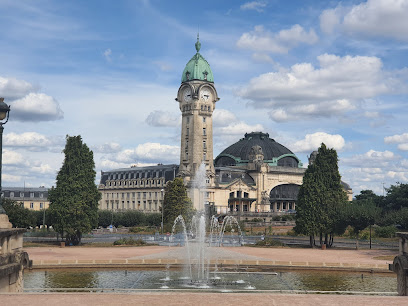
Cathédrale Saint-Étienne de Limoges
Discover the timeless beauty and intricate artistry of Cathédrale Saint-Étienne de Limoges, a must-see Gothic masterpiece in the heart of France.

Halles centrales
Explore the vibrant Halles Centrales in Limoges, a bustling market filled with fresh produce, local delicacies, and the essence of French culinary culture.

Musée national Adrien Dubouché
Discover the exquisite world of ceramics and fine arts at the Musée national Adrien Dubouché in Limoges, a cultural treasure in France.

Chateau de Châlucet
Experience the majestic allure of Château de Châlucet, a historical castle surrounded by stunning hiking trails in the heart of France.
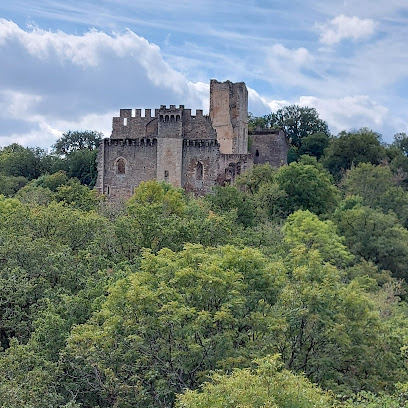
Parc Bellevue
Explore Parc Bellevue, Limoges' ultimate amusement park, featuring thrilling rides, beautiful gardens, and family-friendly attractions for all ages.

Pont Saint-Martial
Explore the iconic Pont Saint-Martial in Limoges, a stunning bridge rich in history and architectural beauty, perfect for every tourist's itinerary.

Musée de la Résistance
Explore the rich history of resistance and resilience at the Musée de la Résistance in Limoges, a must-see destination for history lovers.

Limoges Airport
Experience the charm of Central France through Limoges Airport, your gateway to breathtaking landscapes and rich cultural heritage.

Limoges Tourist Office
Explore Limoges from its heart: the Tourist Office, your source for local insights, porcelain treasures, and guided tours in this artistic French city.

Gare de Limoges-Bénédictins
Explore Limoges through its stunning Gare de Limoges-Bénédictins, an architectural masterpiece blending history and functionality in the heart of France.

Logis Hôtel Black and Green
Experience the tranquil charm of Logis Hôtel Black and Green, a perfect base for exploring Limoges' rich culture and history.

Unmissable attractions to see
Jardin botanique de l'Evêché
Explore the lush landscapes and diverse flora of Jardin botanique de l'Évêché, a tranquil botanical garden in the heart of Limoges.

Aquarium du Limousin
Explore the vibrant underwater world at the Aquarium du Limousin, featuring diverse marine life and interactive educational exhibits in Limoges.

Champ de Juillet
Experience the beauty and tranquility of Champ de Juillet, a charming city park in Limoges that blends nature with cultural heritage.

Cathédrale Saint-Étienne de Limoges
Discover the breathtaking Cathédrale Saint-Étienne de Limoges, a Gothic masterpiece rich in history and architectural beauty in the heart of Limoges.

Parc de l'Aurence
Explore the natural beauty and family-friendly attractions of Parc de l'Aurence in Limoges, a tranquil park perfect for relaxation and adventure.

Musée national Adrien Dubouché
Discover the exquisite art and rich heritage of porcelain at the Musée national Adrien Dubouché in Limoges, France.
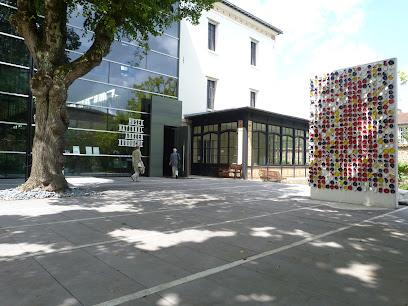
Parc Victor Thuillat
Explore the lush greenery and tranquil pathways of Parc Victor Thuillat, a serene escape in the heart of Limoges, France.

Parc Bellevue
Experience family fun and tranquility at Parc Bellevue, Limoges' enchanting amusement park with lush gardens and thrilling rides.

Pont Saint-Martial
Explore the historic Pont Saint-Martial in Limoges, a stunning bridge that captures the essence of architectural beauty and cultural significance.

Musée de la Résistance
Discover the poignant history of the French Resistance at the Musée de la Résistance in Limoges, a must-visit for history lovers and curious travelers.
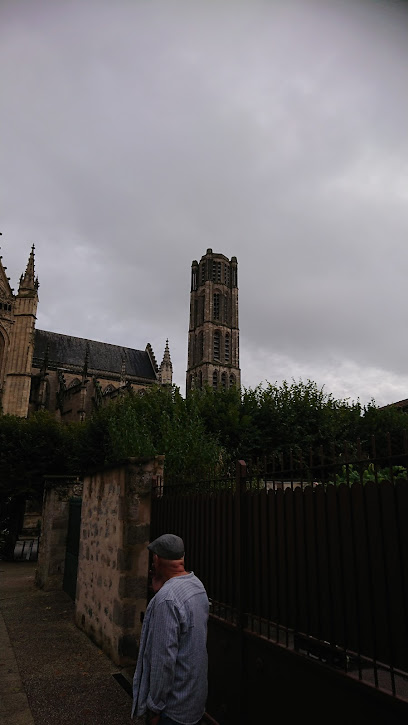
Église Saint-Michel-des-Lions à Limoges
Discover the architectural marvel and serene beauty of Église Saint-Michel-des-Lions in Limoges, a must-visit for every traveler in search of history and culture.

Four à porcelaine des Casseaux
Explore the rich history and artistry of Limoges porcelain at the Four à Porcelaine des Casseaux, a must-visit cultural landmark in France.

Aurence II Park
Explore Aurence II Park, a serene oasis in Limoges, where lush landscapes and vibrant gardens create a peaceful retreat in the heart of the city.

Limoges Fine Arts Museum
Explore the Limoges Fine Arts Museum, a treasure trove of artistic heritage, featuring timeless masterpieces and contemporary exhibitions in a stunning setting.

Parc d'Auzette
Explore the serene beauty of Parc d'Auzette in Limoges, a city park perfect for relaxation, picnics, and enjoying nature's tranquility.

Essential places to dine
Memphis - Restaurant Diner
Discover Memphis Restaurant Diner in Limoges for authentic American flavors with barbecue delights and family-friendly dining experiences.

Les Tables du Bistrot
Discover traditional French cuisine at Les Tables du Bistrot in Limoges - where rustic charm meets culinary excellence.

Léon - Limoges
Discover Léon - Limoges: A Delightful Fusion of Belgian Cuisine and Fresh Seafood in a Vibrant Setting.

Le Pont Saint Etienne
Experience exquisite French cuisine at Le Pont Saint Etienne in Limoges—where tradition meets modernity in every delicious bite.
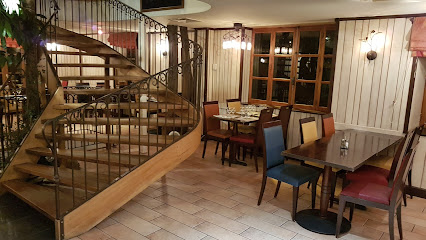
L'Irlandais
Discover authentic Irish culture at L'Irlandais, Limoges - Enjoy delicious fish & chips and vibrant atmosphere in this beloved pub.
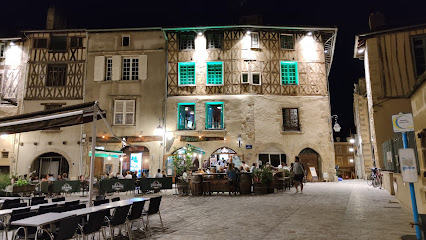
Le Bistrot Jourdan
Indulge in authentic French cuisine at Le Bistrot Jourdan, where local flavors meet a warm and inviting atmosphere in Limoges.

LE BISTROT GOURMAND
Savor authentic French bistro cuisine in Limoges at Le Bistrot Gourmand - where every meal tells a delicious story.

Les Petits Ventres
Discover authentic French cuisine at Les Petits Ventres in Limoges - where every meal tells a story.

Au Bureau
Experience the vibrant atmosphere and diverse menu at Au Bureau in Limoges – your destination for authentic French cuisine and refreshing drinks.
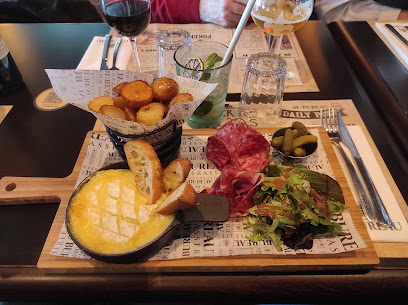
ESCROCS
Experience delicious fast food with a French twist at ESCROCS in Limoges - where flavor meets convenience!

Le Cheverny
Experience exquisite Haute French cuisine at Le Cheverny in Limoges, where elegance meets flavor for an unforgettable dining adventure.

Mamie Bigoude
Experience authentic French cuisine at Mamie Bigoude in Limoges – savor delicious crepes and traditional dishes in a cozy setting.

Chez Alphonse
Experience authentic French cuisine at Chez Alphonse, a charming bistro in Limoges offering delightful dishes and a warm atmosphere.

Les Artistes
Discover Les Artistes in Limoges - where exquisite French cuisine meets artistic charm in an inviting atmosphere.

Pohmaë Limoges Poké bowl
Experience authentic Hawaiian flavors in Limoges at Pohmaë Limoges Poké Bowl - fresh ingredients and vibrant dishes await you.

Markets, malls and hidden boutiques
Family Village Limoges
Discover a vibrant shopping and dining experience at Family Village Limoges, where family fun meets retail therapy.

Centre Commercial Saint Martial Limoges
Explore the vibrant Centre Commercial Saint Martial in Limoges for an unforgettable shopping and dining experience, perfect for tourists and locals alike.

Galeries Lafayette Limoges
Experience the elegance and variety at Galeries Lafayette Limoges, where fashion meets lifestyle in a stunning shopping destination.

Centre Commercial Corgnac
Discover a vibrant shopping haven at Centre Commercial Corgnac in Limoges, featuring diverse retail, dining, and entertainment options for all ages.

Des Marques & Vous
Explore the stylish collections at Des Marques & Vous in Limoges, where fashion meets quality and personalization in an enchanting shopping experience.

Don't Call Me Jennyfer
Explore Don't Call Me Jennyfer, a trendy boutique in Limoges for youth clothing, lingerie, and stylish accessories that reflect contemporary fashion.
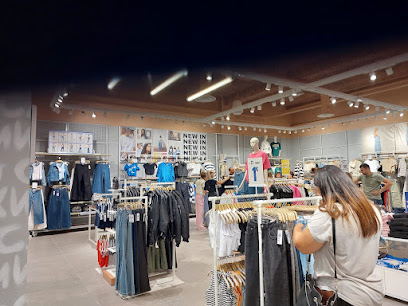
Lachaniette Porcelaine de Limoges
Explore the exquisite world of porcelain at Lachaniette Porcelaine de Limoges, where art meets tradition in the heart of Limoges.

PIMKIE
Discover trendy women's clothing and stylish accessories at PIMKIE in Limoges, the go-to destination for fashion enthusiasts.

À l'Ombre des Marques | Limoges
Explore À l'Ombre des Marques in Limoges for a stylish shopping experience with the latest fashion trends and exquisite apparel.

Dapper
Discover stylish men's fashion at Dapper in Limoges, where elegance meets modern style in a chic boutique setting.

Flying Tiger Copenhagen Limoges
Explore a whimsical world of gifts, home goods, and accessories at Flying Tiger Copenhagen in Limoges.

Promod
Explore stylish women's clothing at Promod in Limoges, a fashion haven for tourists seeking trendy apparel and unique outfits.

BOOGALOU SHOP
Explore the enchanting Boogalou Shop in Limoges for unique gifts and local crafts that embody the spirit of France.

Louis Pion Limoges
Explore Louis Pion Limoges for exquisite gifts, fashionable accessories, and timeless timepieces that embody the elegance of French craftsmanship.

Kusmi Tea | Limoges
Explore the refined world of Kusmi Tea in Limoges, where each cup tells a story of flavors, culture, and impeccable quality.

Essential bars & hidden hideouts
L'Irlandais
Discover the vibrant atmosphere of L'Irlandais, an authentic Irish pub in Limoges, offering delicious fish and chips and a wide selection of beverages.

O'BRIEN TAVERN Irish Pub Limoges
O'Brien Tavern: Experience authentic Irish hospitality in Limoges with a wide selection of beers and traditional cuisine.

Le Sikaru Beer and Bar
Experience the vibrant atmosphere and diverse menu at Le Sikaru Beer and Bar in Limoges, where local brews and French cuisine come together.

Barberousse Limoges
Experience the vibrant nightlife at Barberousse Limoges, a premier live music bar where unforgettable performances and great drinks await.

Chez Bernard
Experience the vibrant nightlife at Chez Bernard, Limoges' premier live music bar with affordable drinks and a lively atmosphere.
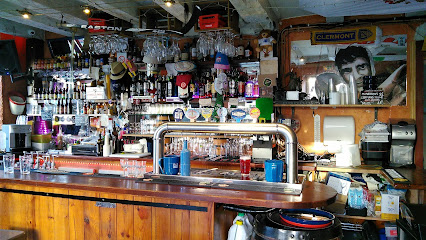
Le DANDY'S bar, club et Karaoké
Discover Limoges' nightlife at Le DANDY'S – a lively cocktail bar and karaoke club offering unforgettable experiences in every sip and song.

Lord John
Unwind at Lord John, Limoges' vibrant cocktail bar, offering innovative drinks and a lively atmosphere perfect for socializing.

Tokyo
Experience the vibrant nightlife of Limoges at Tokyo, a trendy cocktail bar offering delightful drinks in a chic atmosphere.

Le Léprechaun
Discover Le Léprechaun, a charming pub in Limoges offering local drinks, live music, and a cozy atmosphere for an unforgettable night out.

Le Dropkick Bar Limoges
Experience the lively spirit of Limoges at Le Dropkick Bar, where craft beers and delicious food create unforgettable moments.

Le Bacchus
Experience the best of Limoges with exquisite wines and delicious cuisine at Le Bacchus, a top wine bar and restaurant.

Le Duc Etienne
Discover the heart of Limoges at Le Duc Etienne, a charming pub known for its inviting atmosphere and excellent selection of local brews.
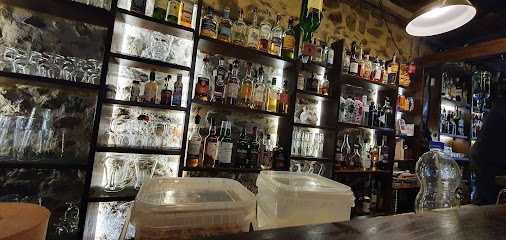
Le Swing'café
Discover the lively atmosphere of Le Swing'café in Limoges, where live music, delicious food, and a vibrant crowd create unforgettable nights.

L'Arkange
Experience the vibrant nightlife at L'Arkange, a must-visit cocktail bar in Limoges offering innovative drinks and an electrifying atmosphere.

Mister Hyde
Discover the vibrant nightlife at Mister Hyde, Limoges' premier bar offering exquisite cocktails and a lively atmosphere.

Travel experiences inspired by this city
Explore more travel diariesLocal Phrases
-
- HelloBonjour
[bohn-zhoor] - GoodbyeAu revoir
[oh ruh-vwahr] - YesOui
[wee] - NoNon
[nohn] - Please/You're welcomeS'il vous plaît/De rien
[seel voo pleh / duh ryehn] - Thank youMerci
[mehr-see] - Excuse me/SorryExcusez-moi/Désolé
[ehk-skew-zay mwa / day-zoh-lay] - How are you?Comment ça va?
[koh-mohn sah vah] - Fine. And you?Bien. Et vous?
[byen. ay voo] - Do you speak English?Parlez-vous anglais?
[pahr-lay voo ahn-glay] - I don't understandJe ne comprends pas
[zhuh nuh kohm-prahnd pah]
- HelloBonjour
-
- I'd like to see the menu, pleaseJe voudrais voir le menu, s'il vous plaît
[zhuh voo-dray vwahr luh muh-nyoo, seel voo pleh] - I don't eat meatJe ne mange pas de viande
[zhuh nuh mahnzh pah duh vyand] - Cheers!Santé!
[sahn-tay] - I would like to pay, pleaseJe voudrais payer, s'il vous plaît
[zhuh voo-dray pay-yay, seel voo pleh]
- I'd like to see the menu, pleaseJe voudrais voir le menu, s'il vous plaît
-
- Help!Au secours!
[oh suh-koor] - Go away!Allez-vous en!
[ah-lay vooz ahn] - Call the Police!Appelez la police!
[ah-puh-lay lah poh-lees] - Call a doctor!Appelez un médecin!
[ah-puh-lay uh mayd-sahn] - I'm lostJe suis perdu
[zhuh swee pair-doo] - I'm illJe suis malade
[zhuh swee mah-lahd]
- Help!Au secours!
-
- I'd like to buy...Je voudrais acheter...
[zhuh voo-dray zah-sheh-tay] - I'm just lookingJe regarde juste
[zhuh ruh-gahrd zhewst] - How much is it?Combien ça coûte?
[kohm-byen sah koot] - That's too expensiveC'est trop cher
[say troh shair] - Can you lower the price?Pouvez-vous baisser le prix?
[poo-veh voo bay-say luh pree]
- I'd like to buy...Je voudrais acheter...
-
- What time is it?Quelle heure est-il?
[kehl uhr ay-teel] - It's one o'clockIl est une heure
[eel ay oon uhr] - Half past (10)Dix heures et demie
[dees uhr ay duh-mee] - MorningMatin
[mah-tahn] - AfternoonAprès-midi
[ah-pray mee-dee] - EveningSoir
[swahr] - YesterdayHier
[yehr] - TodayAujourd'hui
[oh-zhoor dwee] - TomorrowDemain
[duh-man] - 1Un
[uhn] - 2Deux
[duh] - 3Trois
[trwah] - 4Quatre
[kah-truh] - 5Cinq
[sank] - 6Six
[sees] - 7Sept
[sept] - 8Huit
[wheet] - 9Neuf
[nuff] - 10Dix
[dees]
- What time is it?Quelle heure est-il?
-
- Where's a/the...?Où est...?
[oo ay] - What's the address?Quelle est l'adresse?
[kehl ay lah-dress] - Can you show me (on the map)?Pouvez-vous me montrer (sur la carte)?
[poo-veh voo muh mohn-tray (soor lah kart)] - When's the next (bus)?Quand est le prochain (bus)?
[kahn ay luh proh-shahn (boos)] - A ticket (to ....)Un billet (pour ....)
[uhn bee-yay (poor)]
- Where's a/the...?Où est...?
History of Limoges
-
The history of Limoges dates back to ancient times when the Romans established the settlement of Augustoritum around 10 BC. The site was strategically chosen due to its location by the Vienne River and its position at the crossroads of several major Roman roads. Remnants of this era include the Roman bridge over the Vienne and the remains of the amphitheater, which highlight the city's early importance as a regional hub.
-
During the Middle Ages, Limoges flourished as a center of trade and religious activity. The construction of the Limoges Cathedral, a stunning example of Gothic architecture, began in the 13th century and continued for several centuries. The city became renowned for its production of Limoges enamel, a fine art form that adorned many ecclesiastical and royal objects. The presence of the Abbey of Saint Martial further established Limoges as a vital religious and cultural center.
-
The Renaissance period saw Limoges continue to thrive, particularly in the arts. The city was a significant center for the production of painted enamel on copper, an art form that reached new heights during this era. Renowned artisans such as Léonard Limosin brought international fame to the city with their exquisite craftsmanship. The influence of the Renaissance is still visible today in the architecture of many of Limoges' historic buildings.
-
Limoges underwent significant transformation during the Industrial Revolution. The discovery of kaolin in the nearby region in the 18th century led to the development of the Limoges porcelain industry, which became a hallmark of the city. By the 19th century, Limoges porcelain was highly sought after globally, and the city became synonymous with high-quality ceramics. Factories and workshops flourished, employing a significant portion of the population and contributing to the city's economic growth.
-
During World War II, Limoges played a crucial role in the French Resistance against Nazi occupation. The city's strategic location and its resilient populace made it a hub for resistance activities. Notably, the Maquis du Limousin, a prominent resistance group, conducted numerous operations in the region. The legacy of this period is remembered through various memorials and museums that honor the bravery and sacrifices of the resistance fighters.
-
Today, Limoges is a vibrant city that celebrates its rich cultural heritage while embracing modernity. It is home to numerous museums, including the Musée National Adrien Dubouché, which houses an extensive collection of porcelain, and the Musée des Beaux-Arts de Limoges, located in the former episcopal palace. The city's annual events, such as the Festival International des Francophonies, highlight its ongoing commitment to cultural and artistic excellence.
Limoges Essentials
-
Limoges is located in the Nouvelle-Aquitaine region of central France. The easiest way to reach Limoges is by flying into Limoges-Bellegarde Airport, which receives flights from various European cities. From the airport, you can take a taxi or a shuttle bus to the city center. Alternatively, Limoges is well-connected by train, with the Limoges-Bénédictins railway station offering direct services from major cities like Paris, Bordeaux, and Toulouse. Driving to Limoges is also an option, with the A20 motorway providing a convenient route.
-
Limoges has a comprehensive public transportation system, including buses and trams operated by STCL. Single tickets and day passes can be purchased at kiosks and on-board. Taxis are readily available and can be hailed on the street or booked through a mobile app. For those who prefer to cycle, bike rentals are available throughout the city. Walking is also a great way to explore the compact city center.
-
The official currency in Limoges, as in the rest of France, is the Euro (EUR). Credit and debit cards are widely accepted in hotels, restaurants, and shops. ATMs are plentiful, allowing easy access to cash. It is advisable to carry some cash for small purchases, especially in more rural areas or local markets.
-
Limoges is generally a safe city for tourists. However, as with any travel destination, it is important to take standard precautions. Avoid displaying valuables and be cautious in crowded areas to prevent pickpocketing. Certain neighborhoods such as La Bastide and Beaubreuil have higher crime rates, so it is best to remain vigilant when visiting these areas, especially at night.
-
In case of an emergency, dial 112 for immediate assistance. Limoges has several hospitals and medical facilities, including the University Hospital of Limoges. Pharmacies are available for minor health issues and often have staff who speak English. It is highly recommended to have travel insurance that covers medical emergencies.
-
Fashion: Do dress smart-casual, especially when dining out or visiting cultural sites. Avoid overly casual or revealing clothing. Religion: Do respect local customs when visiting churches and religious sites. It is customary to dress modestly and remain quiet. Public Transport: Do validate your ticket upon boarding and offer your seat to elderly passengers. Don’t eat or drink while on public transport. Greetings: Do greet people with a polite 'Bonjour' and a handshake. Avoid using first names until invited to do so. Eating & Drinking: Do try local specialties such as Limousin beef and clafoutis. Don’t rush your meals; dining is often a leisurely activity.
-
To experience Limoges like a local, visit the bustling markets such as the Halles Centrales, where you can find fresh produce and regional goods. Spend time in the Quartier de la Boucherie, an old butchers' district that offers a glimpse into the city's history. Don’t miss the opportunity to explore the porcelain shops, as Limoges is famous for its fine porcelain. For a relaxing experience, take a stroll in the Jardin de l'Évêché or along the banks of the Vienne River.
Trending Landmark in Limoges
-
Oradour sur Glane memory centre
-
Jardin botanique de l'Evêché
-
Aquarium du Limousin
-
Champ de Juillet
-
Cathédrale Saint-Étienne de Limoges
-
Halles centrales
-
Musée national Adrien Dubouché
-
Chateau de Châlucet
-
Parc Bellevue
-
Pont Saint-Martial
-
Musée de la Résistance
-
Limoges Airport
-
Limoges Tourist Office
-
Gare de Limoges-Bénédictins
-
Logis Hôtel Black and Green
Nearby Cities to Limoges
-
Things To Do in Tours
-
Things To Do in Bordeaux
-
Things To Do in La Rochelle
-
Things To Do in Angers
-
Things To Do in Toulouse
-
Things To Do in Nantes
-
Things To Do in Lyon
-
Things To Do in Lourdes
-
Things To Do in Montpellier
-
Things To Do in Nîmes
-
Things To Do in Dijon
-
Things To Do in Versailles
-
Things To Do in Rennes
-
Things To Do in Paris
-
Things To Do in Avignon













